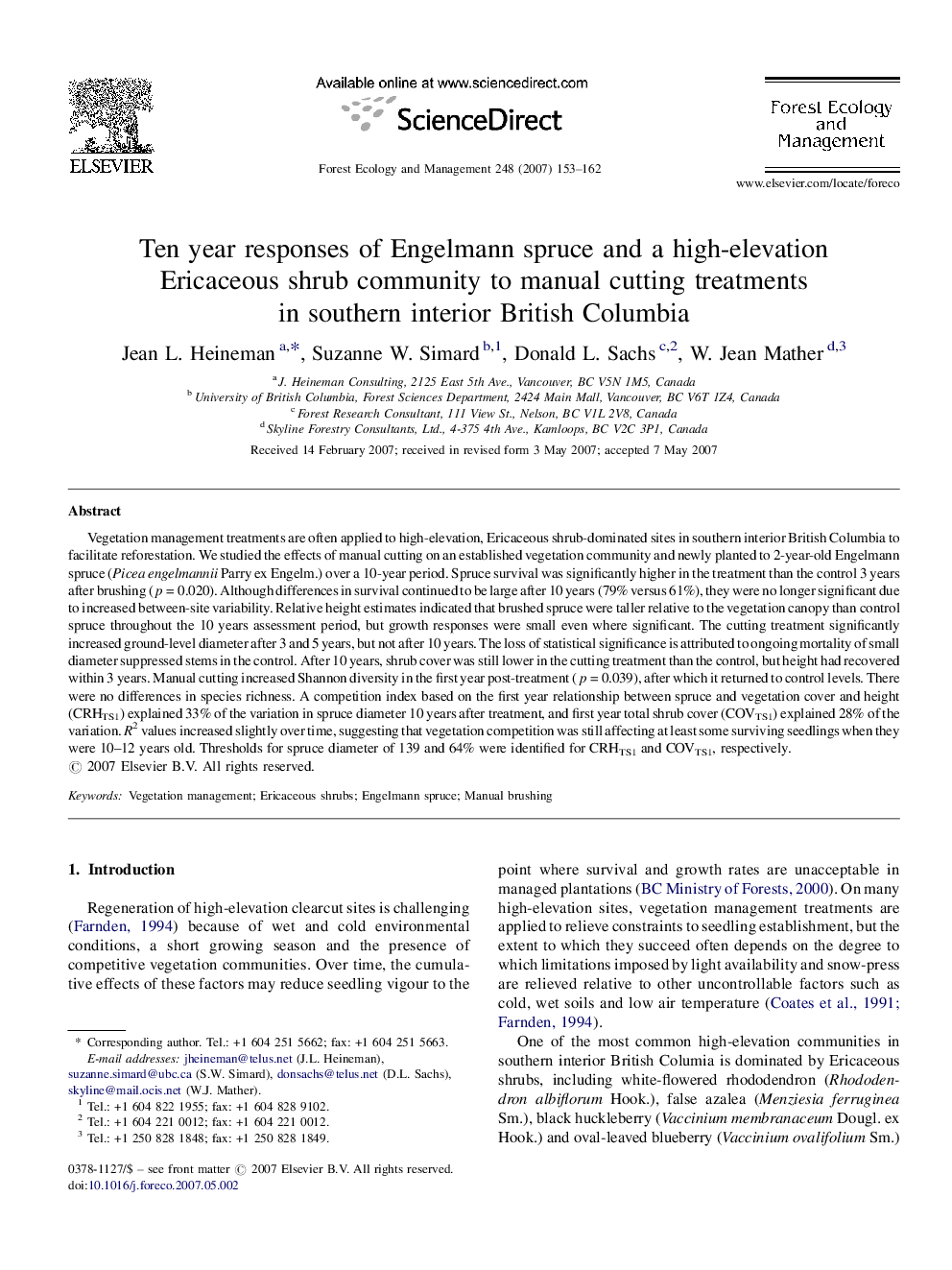| کد مقاله | کد نشریه | سال انتشار | مقاله انگلیسی | نسخه تمام متن |
|---|---|---|---|---|
| 90449 | 159382 | 2007 | 10 صفحه PDF | دانلود رایگان |

Vegetation management treatments are often applied to high-elevation, Ericaceous shrub-dominated sites in southern interior British Columbia to facilitate reforestation. We studied the effects of manual cutting on an established vegetation community and newly planted to 2-year-old Engelmann spruce (Picea engelmannii Parry ex Engelm.) over a 10-year period. Spruce survival was significantly higher in the treatment than the control 3 years after brushing (p = 0.020). Although differences in survival continued to be large after 10 years (79% versus 61%), they were no longer significant due to increased between-site variability. Relative height estimates indicated that brushed spruce were taller relative to the vegetation canopy than control spruce throughout the 10 years assessment period, but growth responses were small even where significant. The cutting treatment significantly increased ground-level diameter after 3 and 5 years, but not after 10 years. The loss of statistical significance is attributed to ongoing mortality of small diameter suppressed stems in the control. After 10 years, shrub cover was still lower in the cutting treatment than the control, but height had recovered within 3 years. Manual cutting increased Shannon diversity in the first year post-treatment (p = 0.039), after which it returned to control levels. There were no differences in species richness. A competition index based on the first year relationship between spruce and vegetation cover and height (CRHTS1) explained 33% of the variation in spruce diameter 10 years after treatment, and first year total shrub cover (COVTS1) explained 28% of the variation. R2 values increased slightly over time, suggesting that vegetation competition was still affecting at least some surviving seedlings when they were 10–12 years old. Thresholds for spruce diameter of 139 and 64% were identified for CRHTS1 and COVTS1, respectively.
Journal: Forest Ecology and Management - Volume 248, Issue 3, 15 September 2007, Pages 153–162